Monsignor Jaussen soon locates in Tahiti a laborer from Easter Island, Metoro, who claims to be able to read the tablets. He describes in his notes how Metoro turns each tablet around and around to find its beginning, then starts chanting its contents.
The direction of writing is unique. Starting from the left hand bottom corner, you proceed from left to right and, at the end of the line, you turn the tablet around before you start reading the next line. Indeed, the orientation of the hieroglyphs is reversed every other line. Imagine a book in which every other line is printed back to front and upside down. That is how the tablets are written! Jaussen was not able to decipher the tablets.

There are also many zoomorphic figures, birds especially, fish and lizards less often. The most frequent figure looks very much like the frigate bird, which happens to have been the object of a cult, as it was associated with Make Make, the supreme god.
When you compare the tablets which bear the same text, when you analyze repeated groups of signs, you realize that writing must have followed rules. The scribe could choose to link a sign to the next, but not in any old way. You could either carve a mannikin standing, arms dangling, followed by some other sign, or the same mannikin holding that sign with one hand. You could either carve a simple sign (a leg, a crescent) separate from the next, or rotate it 90 degrees counterclockwise and carve the next sign on top of it.
All we can reasonably hope to decipher some day is some two to three lines of the tablet commonly called Mamari. You can clearly see that they have to do with the moon. There are several versions of the ancient lunar calendar of Easter Island.
PETROGLYPHS
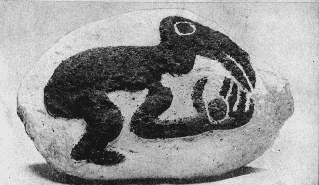
On Easter Island, petroglyphs are located in every sector of the island where there are suitable surfaces. Favored locations are smooth areas of lava flow (called “papa” in Rapanui), or on smooth basalt boulders. Most of these surfaces occur along coastal areas and often are associated with major ceremonial centers. Some important ahu have, as part of their structure, elegantly carved basalt stones (pa’enga), with petroglyphs on them. Paintings survive in caves or in some of the stone houses at ‘Orongo where they are protected against the weathering process.
Thousands of petroglyphs – rock carvings – can be found on Easter Island. Many represent animals, notably birds or anthropomorphic birdmen.
One of the most famous motifs on Easter Island is that of birdman – a half-man, half bird image that was connected to cult events at the sacred site of ‘Orongo. A bit of background on the culture is necessary to explain this unusual cult.
After the demise of the statue building, in the last days before the invasion by Peruvian slave traders, there arose a cult of the Birdman (Tangata Manu). The birdman was seen as the representative on earth of the creator god Makemake, and eventually, this cult surpassed the traditional power of the king ariki.
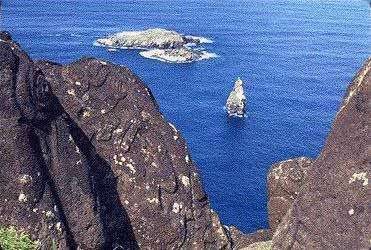
Once a year, representatives from each clan would gather at the ceremonial village of Orongo and swim to Motu Nui, a nearby Islet to search for the egg of the Sooty Tern. On his return, the competitor presented the egg to his representative who was then invested with the title of Tangata Manu. He then went down to Mataveri and from there was led in procession to the southwest exterior slope of Rano Raraku, where he remained in seclusion for a year. The Birdman ritual was still in existence when Europeans arrived on Easter Island – therefore historically documented. It was also featured quite prominently in Kevin Costner’s film “Rapa Nui”.
In Hanga Roa -a sprawling and pleasant community where the island’s 2,775 residents live because it’s the only area on the island with electricity and running water. The most interesting souvenirs are miniature wood and stone carvings of moais, though some stone samples up to 6 feet tall are available.
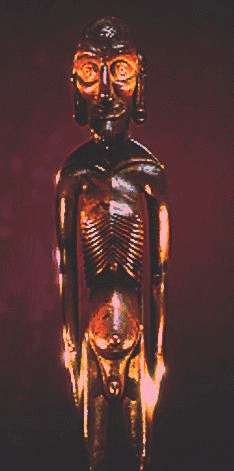
Moai Kavakava
A bearded emaciated man whose ribs and vertebrae are grotesquely extended.
It is said to represent the spirits of dead ancestors.
According to the local tradition, as Chief Tuu-ko-ihu was returning home, he saw two such spirits who had protruding ribs and hollow bellies. These Aku Aku later appeared to him in a dream.
Other Rapa Nui wood carvings include: statues of female figures (moai pa’a pa’a), paddles (rapa), clubs (ua), staffs (‘ao), lizards and birdman images (tangata manu).
Today, most of the original wood sculptures reside in museums around the world – estranged from their ancestral home. The islanders still carve these statues; continuing a tradition which, to this day, commands respect and admiration from visitors.
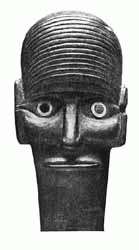
M.H. de Young Memorial Museum
TATOO
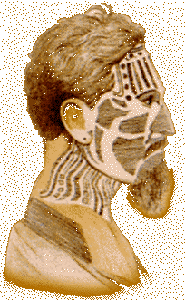
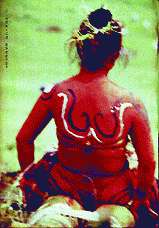
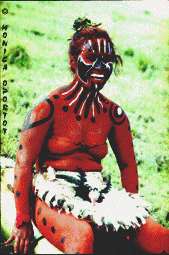
Wearing a tatoo in various parts of the body is a popular custom.
CANNIBALISM
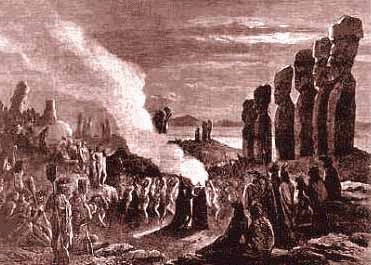
Every Easter Islander knows that his ancestors were kai-tangata, ‘man-eaters’.